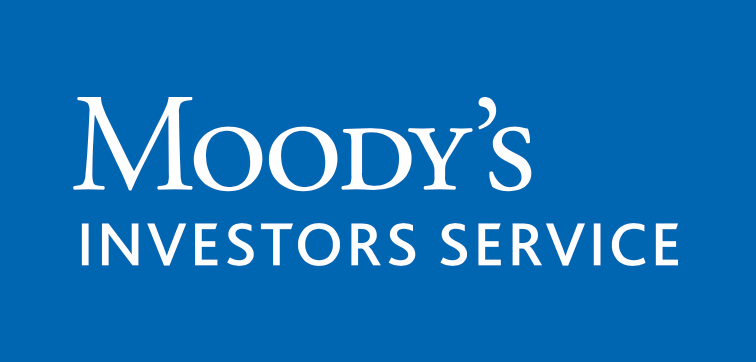Reinsurance companies have almost completed an evolution of their business models to enable them to coexist with alternative capital and insurance-linked securities (ILS), according to Moody’s, but the rating agency noted that there are risks to this engagement.
 Having faced significant challenges from the “secular growth of alternative reinsurance capital” as institutional investors increasingly targeted relatively uncorrelated returns from insurance-linked investments, reinsurers have been forced to adapt, according to Moody’s Investors Service in a new report.
Having faced significant challenges from the “secular growth of alternative reinsurance capital” as institutional investors increasingly targeted relatively uncorrelated returns from insurance-linked investments, reinsurers have been forced to adapt, according to Moody’s Investors Service in a new report.
From 2011 to 2017 ILS capital in reinsurance rose from roughly $11 billion to $87 billion, which became a major competitor and threat to the traditional reinsurance model.
But reinsurers learned to embrace this and many now make use of ILS capital as both a source of retrocessional reinsurance and a lever for growth, or capital management.
“Reinsurers’ business models evolved to increase their utilization of retrocessional reinsurance (typically supplied by alternative capital providers) as a way to lower their own total cost of capital, manage peak risk exposures, improve risk-adjusted returns and enhance their competitive positioning,” the rating agency explained.
While some of the reinsurer cohort also adapted their business models further to embrace ILS and alternative capital, creating fund management platforms, risk sharing structures such as sidecars and other ways to bring ILS investors more deeply within their businesses, with a goal of creating a stable stream of management fee income and profit-shares.
These alternative capital platforms present a range of benefits, from enhancing a reinsurers market presence, to lowering volatility in their results and their cost-of-capital, to improving their financial flexibility, or increasing their risk adjusted returns.
Interestingly, Moody’s explains that, “The sheer capital intensity of property catastrophe reinsurance business results in significant capital efficiencies that can achieved by ceding risk to an affiliated sidecar. We estimate that management and profit incentive fees can boost expected returns on equity by around 150 basis points without an increase in net risk.”
As we explained yesterday, analysts of and equity investors in reinsurance companies are not convinced, feeling that few reinsurers have actually demonstrated the cost-of-capital benefits of managing third-party capital in sidecar structures so far.
Which we believe comes down to the way it is communicated, as many reinsurers are extremely cagey and closed when it comes to disclosure around their third-party capital management, but clearly their shareholders want to understand more here.
Moody’s goes on to highlight some of the operational and execution risks that reinsurers now face, as they increasingly engage with alternative capital and manage ILS structures.
For those using ILS and third-party reinsurance capital for retrocession, the biggest risk is that source of retro capital drying up, Moody’s explains.
This has, of course, been seen in the past, especially when the CATCo product disappeared from the market, leaving some underwriters in a position where they had lost a significant capital and protection tool that they had relied on.
“Reinsurers pursuing a gross to net underwriting strategy will always have heightened levels of operational and execution risk relative to a company using only its own balance sheet,” Moody’s cautions.
Other critical factors and areas of potential risk include: the alignment of interest with investors in an alternative capital structure; the robust corporate governance that is needed around ILS ventures; the quality and permanence of capital, as not all third-party capital is equal; the contractual details around collateral and capital funds to ensure collection is as expected and desired; the track record that develops as a manager of third-party capital is key, or if it develops badly it can lead to reputational risks; finally, operational and franchise risks as capital needs to remain available even under extreme stress events.
All of these need to be considered by insurers and reinsurers venturing into managing or engaging with alternative and ILS capital.
It’s clear from yesterday’s news related to equity shareholders in reinsurers, that there is a need for greater transparency around this as well.
When engaging with alternative capital reinsurers are often building second balance-sheets, which should be to the benefit of their shareholders. But their equity holders in many cases do not feel they have a clear view of any benefits the third-party capital ventures are delivering.
This could become a critical issue for some reinsurance firms managing ILS capital, as they really need to be able to demonstrate that it is additive, to their business models and their profits, in order to keep their equity holders satisfied that they are making prudent strategic decisions around capital use.
 View all of our Artemis Live video interviews and subscribe to our podcast.
View all of our Artemis Live video interviews and subscribe to our podcast.
All of our Artemis Live insurance-linked securities (ILS), catastrophe bonds and reinsurance video content and video interviews can be accessed online.
Our Artemis Live podcast can be subscribed to using the typical podcast services providers, including Apple, Google, Spotify and more.































